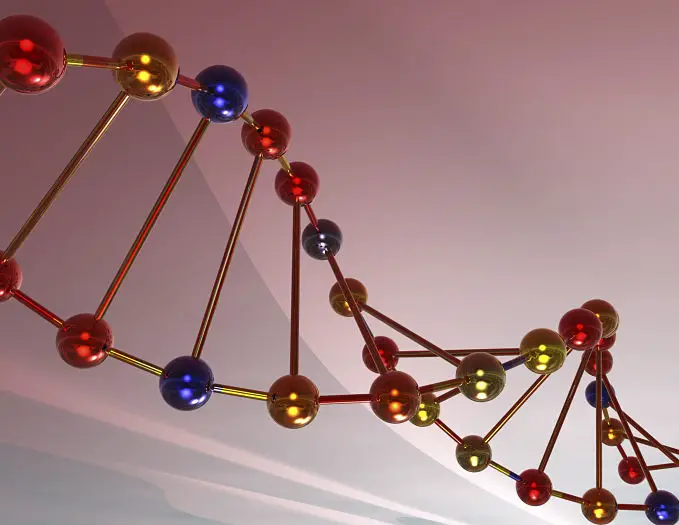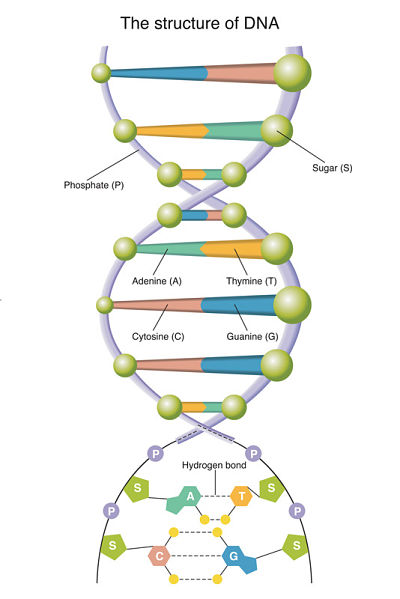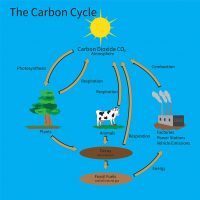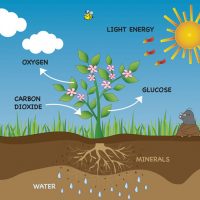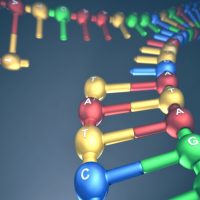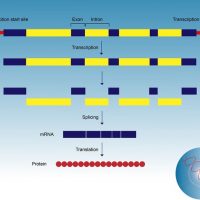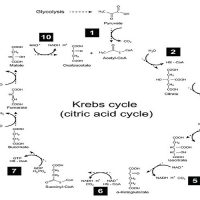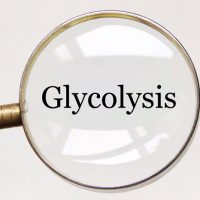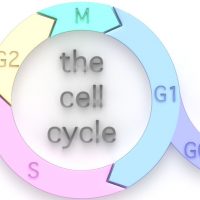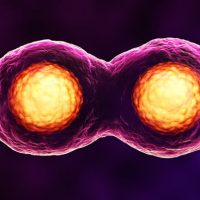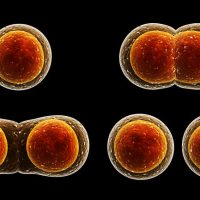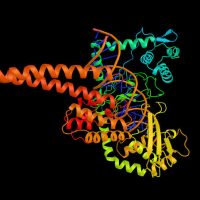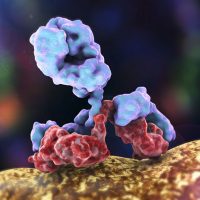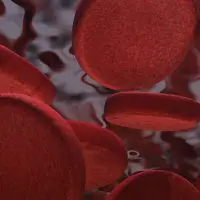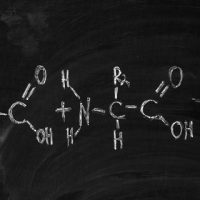Nearly everyone has heard of DNA, the chemical that holds genetic information, but what does DNA stand for? Read on to learn more.
DNA stands for deoxyribonucleic acid.
DNA explained
DNA is short for deoxyribonucleic acid. It is a molecule found in the nucleus of every cell of every living thing that codes for nearly all cellular activities.
Each molecule is made of millions of nucleotides, each consisting of three components – the sugar deoxyribose, a phosphate group, and one of four nitrogenous bases (adenine, guanine, thymine, or cytosine). These nucleotides are strung together in long chains, paired with another long chain, and coiled to create a double helix structure.
This structure resembles a twisted ladder, where the sugars and phosphates of the nucleotides form the side rails of the ladder and the nitrogenous bases point toward each other in the middle to form the rungs.
DNA exists either as chromatin or as tightly coiled chromosomes, fitting neatly into each cell’s nucleus. Different organisms have different numbers of chromosomes: humans have 46 chromosomes while hedgehogs have 90 and strawberries have 56. Every cell in an organism contains an entire set of DNA, even though each cell only uses certain sections and not the entire sequence.
DNA is unusual in its ability to replicate itself (with enzyme helpers). Nitrogenous bases are always hydrogen bonded to the same partner – adenine always pairs with thymine while cytosine always pairs with guanine. This is referred to as complementary base pairing and allows one strand’s base sequence to predict the other. In this way, each strand of DNA can be used as a template to replicate the other, meaning two full DNA molecules can be created from one in DNA synthesis.
An organism’s entire genetic code is defined by the sequence of the four nitrogenous bases. The human genome contains 3 billion DNA base pairs – like a book containing 3 billion characters (bases), written into 46 chapters (chromosomes), using only 4 letters. The sequence of these letters, or bases, can vary greatly from person to person, making each of us genetically unique.
An organism’s DNA sequence contains genes, which are sequences that each code for the production of one specific protein. Enzymes and organelles in the cell read the genes and eventually translate them into proteins, which complete a vast number of critical cellular activities, such as cellular respiration and mitosis, and also contribute to an organism’s physical characteristics. In humans, proteins determine hair and eye colour, blood type, and muscle contractions, just to name a few.

